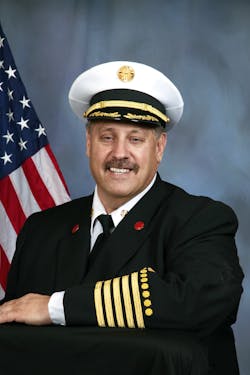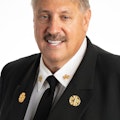As of this writing, over 4,229 people have signed a petition asking the Tennessee Governor Bill Haslam to enact legislation banning EMS personnel from working 24-hour shifts. Who knows if Haslam will act upon the petition, but it certainly highlights EMS workers’ concerns related to fatigue and sleep deprivation. After all, getting over 4,225 people to sign a petition is a good barometer that many believe EMS shifts are too long, resulting in poor decisions for patient care and driving. Additionally, many feel working long shifts can also contribute to obesity, diabetes and impaired glucose tolerance, cardiovascular disease and hypertension, anxiety symptoms, depressed moods and alcohol use among those who work on ambulances.
The petition covers a lot of information, including that EMS is one of the only professions to have work hours that are not restricted. Currently, many professions—airline pilots, train operators, truck drivers and ship captains—are restricted with the number of hours they can work in a 24-hour period.
The petition points out that many private ambulance companies operate with one paramedic and one EMT on each ambulance. As a result, there is tremendous turnover, as workers opt for jobs in hospitals or other fields. And this is happening while some are pushing for paramedics to have an associate degree or bachelor’s degree in order to become a paramedic. Requiring degrees will result in fewer paramedics and cause more demands on existing paramedics, driving more out of the profession. Who would want to pay $30,000–$40,000 for a degree to become a paramedic when you put in the same time and money into becoming a nurse with better pay and working conditions?
Sleep study
Fatigue and sleep deprivation are concerns for EMS workers. In 2016, the National Highway Traffic Safety Administration (NHTSA) awarded a contract to the National Association of State EMS Officials (NASEMSO) to conduct a study and provide recommendations on sleep deprivation and fatigue in EMS. Called the “Fatigue in EMS Risk Management” project, NASEMSO partnered with a team of researchers from the University of Pittsburgh School of Medicine. The findings and recommendations can be found on the NASEMSO website, nasemso.org.
The five recommendations provided include:
- Use fatigue/sleepiness surveys to measure and monitor EMS personnel fatigue;
- Limit EMS shifts to less than 24 hours in duration;
- Provide EMS personnel access to caffeine to help stave off fatigue;
- Allow EMS personnel the opportunity to nap while on duty; and
- Provide education and training in fatigue risk management to EMS personnel.
There are several other solutions. Departments should adequately staff enough ambulances to handle the call volume so that personnel are not running back-to-back calls for a 24-hour period.
Another option is to reduce shifts down to 12 hours. One strategy I used when I was a deputy fire chief in the Memphis, TN, Fire Department was to rotate firefighter-paramedics from the engine company to the ambulance every 12 hours. Unfortunately, many ambulance services who are third service, hospital-based or privately operated do not have that luxury.
Regardless of the type of EMS system model, if your employees work 24-hour shifts, you should have sleeping arrangements for them. A couch or a La-Z-Boy is not a suitable substitute for a bed and pillow. Further, services should not restrict sleeping times. If all the chores and training are done, employees should be encouraged to get rest during down periods in case they happen to make runs excessively that may cut into normal sleep hours. Bunk halls and/or dorms should be sanctuaries with restricted use of electronic devices, such as TVs, phones or radios, unless the user is wearing earplugs. Many bunk halls or sleeping facilities have a fan running to create white noise in the event someone comes in, so they do not wake the person who is sleeping.
Avoid disaster
The issue of sleep deprivation and fatigue in EMS is real. Anyone who has worked 24-hour shifts and has run back-to-back calls knows how hard it can be. There are countless studies beyond the one performed by NASEMSO that prove the validity and concerns of making decisions and driving while fatigued. Only through proper management of the problem—including putting policies, procedures and equipment in place to help manage the problem—can disasters be avoided.
About the Author
Gary Ludwig
GARY LUDWIG has served in three fire departments over his career: St. Louis, Memphis, and Champaign, IL. His fire, EMS and rescue career spanned a total of 46 years, and he has been a paramedic for over 44 years. Ludwig served as president of the International Association of Fire Chiefs in 2019-20. He has a Master’s degree in Business and Management, has written over 500 articles for professional fire and EMS publications and is the author of seven books.
Connect with Gary
Email: [email protected]
Facebook: Gary Ludwig
Twitter: @ChiefGaryLudwig
Website: garyludwig.com

